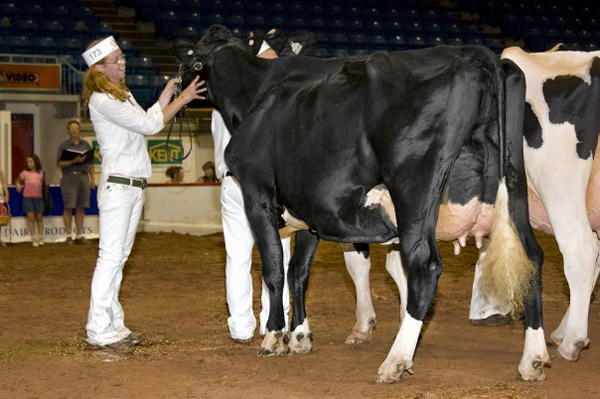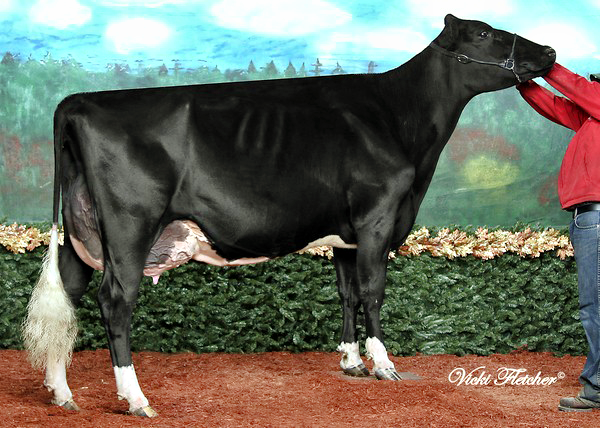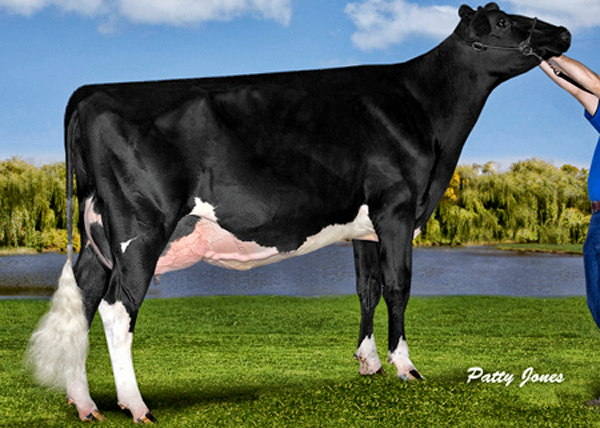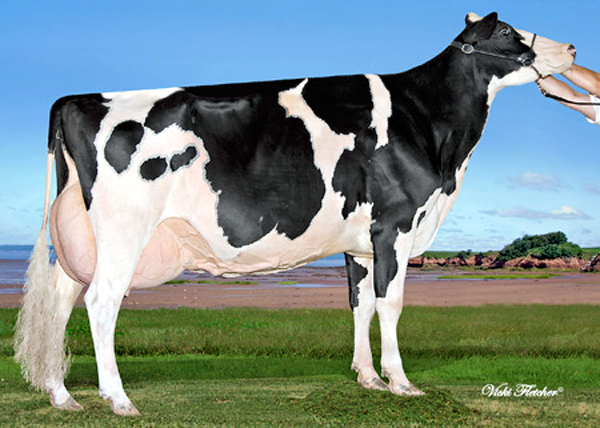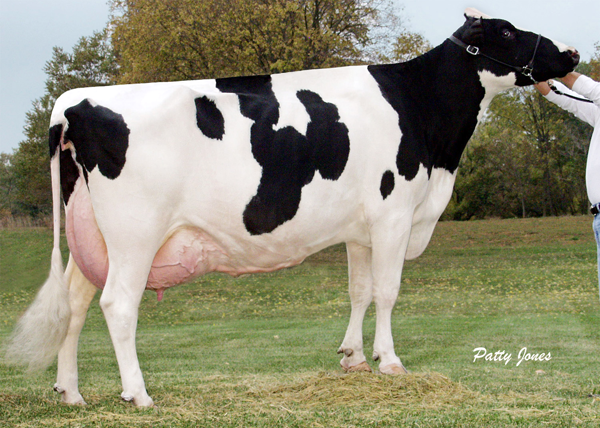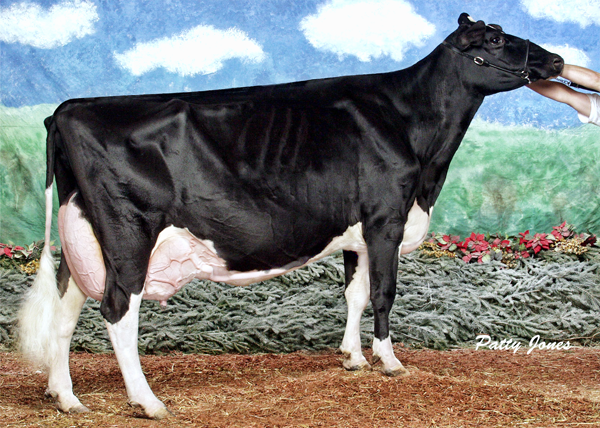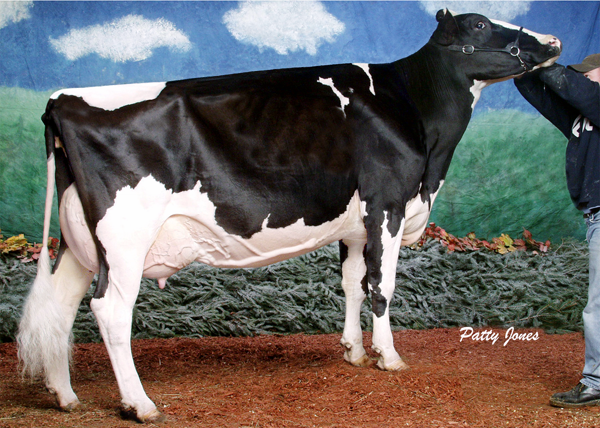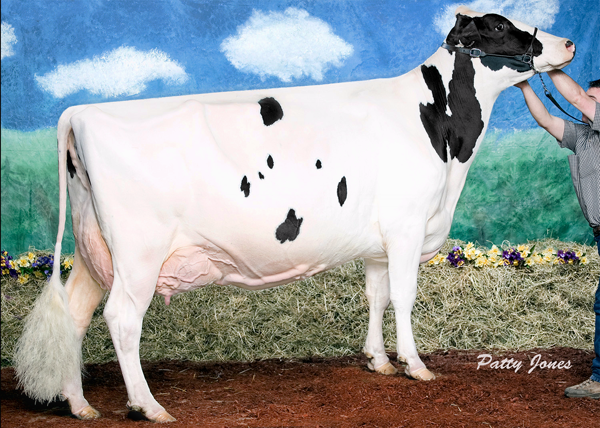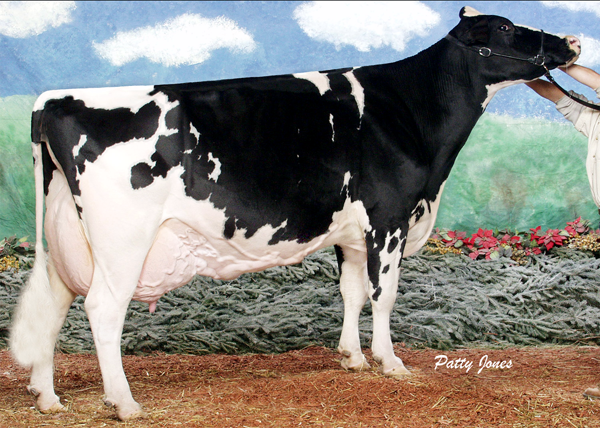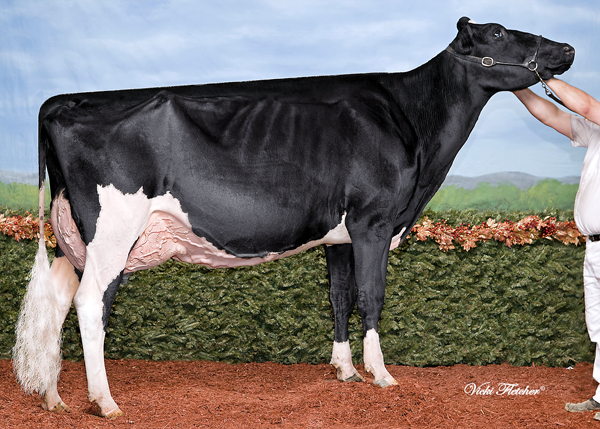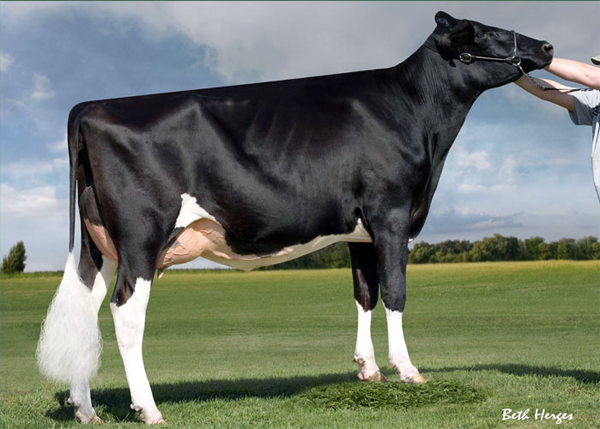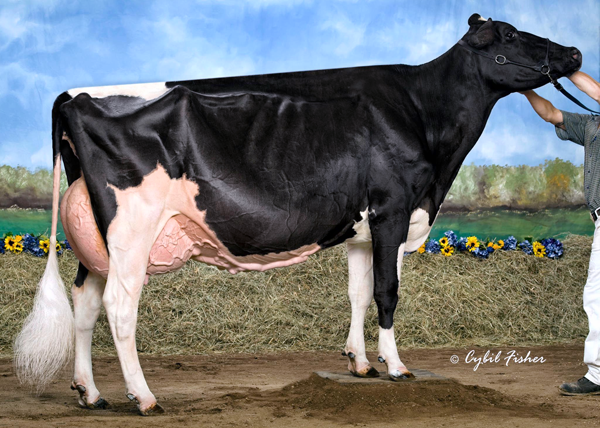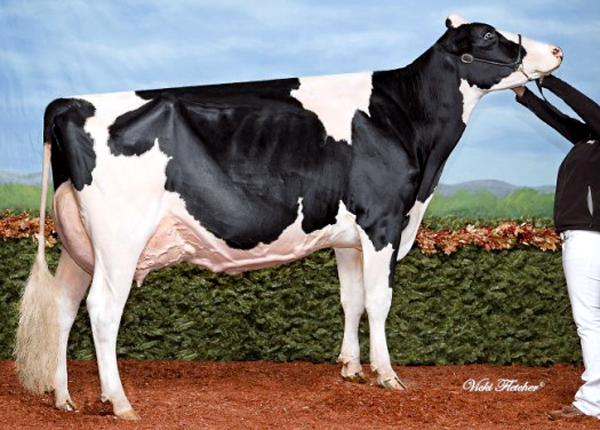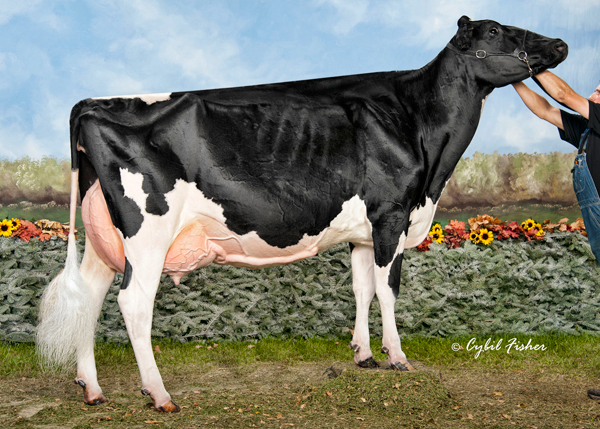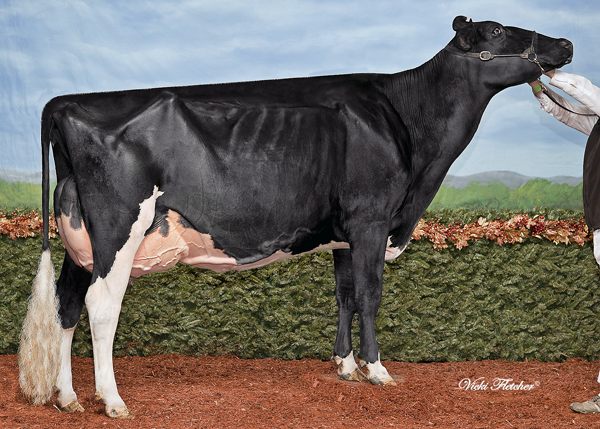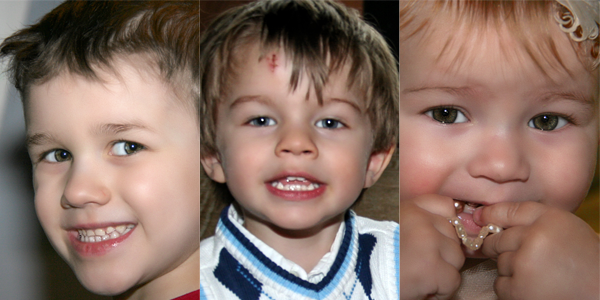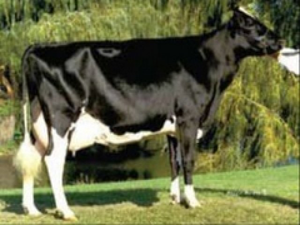The great thing about the North American dairy breeding industry is how passionate breeders are about what they do. This is what makes most dairy farmers get up in the morning to do hard work that many would not. Over the years there have been many great breeders that have dedicated their lives to advancing the breed. The following is our top 10 list of the ones who the Bullvine feels have had the biggest impact on the North American Holstein industry.
#10 Ferme Gillette
Like many entrants at the start of our list, Ferme Gillette is still building their name. Master Breeder shields, Class Extra Sires, males and females at the top of the genomic list, honor list producers, All-Canadian awards, two Canadian cow of the year awards, and even a Guinness World Record. The Patenaude family has already achieved many great achievements. Ferme Gillette is owned and operated by Dr. Gilles and Lorette Patenaude, their four sons Marc, Louis, Vincent, and Mathiea and their families. Numerous headliners call Gillette Farms home including offspring from these prominent maternal lines: Baler Twine, Roxys, Jericho, Juror Faith, Spottie, Elegance and more.
#9 Markwell Holsteins & Regancrest Farms
Markwell Holsteins and Regancrest Farms, like Gillette is continuing to build their legacies. Both farms are built around strong foundation cows. For Regancrest that is Snow-N-Denises Dellia and Queen of the Breed II. Leading the way is the Remarkable Raven recognized for her brood-cow status. Her genetics are among the most sought after around the world. This cow family has produced such great daughters as Durham Daisy EX92, the honorable Mention All-American SR 2-YR Old in 2002.
#8 Rosafe Farms
In fleeing his turbulent Argentina Hector I. Astengo came to Canada and purchased the outstanding A.B.C. farms. During its time Rosafe produced such great breeding stock as Temple Farm May, A.B.C. Inka May, A.B.C. Pontiac Pathfinder and the great A.B.C. Reflection Sovereign, probably the biggest contributor to their success. While it was impossible to buy a Rosafe animal at private treaty, they did sell many animals through reduction sales. Genetics from these sales have percolated down to every contemporary major league pedigree. The success of the Rosafe herd, particularly in the show ring, was the propelling force behind one of the major movements in breed history.
#7 Romandale Farms
In the 1960’s and 1970’s the Romandale Farm’s herd owned by Stephen and George Roman was a commanding force in Holstein affairs. In its glory years, it fielded North America’s leading show herd. For a decade, it claimed the history setting record for All-Canadian bred and owned. Romandale Farms was the home of show ring conquerors, potent brood cows and sires of vast influence. Promoted enthusiastically and merchandised with consummate skill. The Romandale Holsteins were, in effect, a money press.
#6 Comestar Holstein
The bloodlines developed by the Comestar herd have wielded major impact on the Holstein world. Through Comestar Laurie Sheik and her descendants, Comestar has made a name for themselves world wide as a force to be reckoned with. Marc Comtois has never wavered in the kind of cow he wanted to breed and work with. “She must have dairyness, good bone quality and good texture to her udder” – all the trademarks of the Laurie Sheik family. Through such bulls as Stormatic, Lee, Lheros, and Outside it’s hard to find any pedigrees that have not been touched by Comestar.
#5 Roybrook Farms
As a result of his line-breeding (inbreeding when it works), Frederick Roy Ormiston rode the high crest of success and affluence. Often called “The Holstein Man’s Holstein Man”, an informal poll in the late 1980’s by Holstein World, voted him North America’s most admired breeder. Dismayed with the artificial insemination industry’s increasing reliance on statistics at the expense of common sense, he described some of the materials that the geneticists were placing before the Holstein public as “an insult to the human race”, Roy used his common sense to breed three of the most influential sires in history, Telstar, Starlite and Tempo all of which were line bred to Balsam Brae Pluto Sovereign.
#4 Mil-R-Mor Holsteins
No list can be complete without including the home of Glenridge Citation Roxy, two time Queen of the Breed. Probably the greatest impact Mil-R-Mar has achieved was through Mil-R-Mor Roxette, dam of Hanover-Hill Raider and his full sister Hanover-Hill Star Roxy EX-92 2E, twice nominated All-American and producing four EX-94 offspring, three daughters, and one son. These days we see the Roxy’s all over the world with great results in the show ring, bulls hitting the top Genomic rankings and family members selling for sky-high prices at auctions. All of them were out of different branches, which trace back to the one and only QUEEN; Roxy!
#3 Carnation Farms
The belief that quality milk came only from quality cows eventually led Elbridge Amos Stuart, owner of the evaporated milk company Carnation, to establish his own breeding farm, known as Carnation Farm. On his breeding farm, through practical science and application, Stuart was able to continue improving the quality and production of milk from his Carnation cows. In fact, Carnation cows held the world milk production record for 32 consecutive years. One cow in particular, Segis Pietertje Prospect, produced 37,381 pounds of milk during 1920. So proud was Stuart, he erected a statue of the cow to honor this record for milk production that held top honors for 16 years. It was through such accomplishments that Stuart was able to make significant contributions to dairy science while helping to improve the world’s food supply.
#2 Mount Victoria
The invincible blood that pumped through the veins of Thomas Basset Macaulay lead to the Mount Victoria herd having affected cattle populations in every land under the sun. Macaulay an insurance executive actually got into Holstein cattle more by chance than by design. When he discovered the farm he had purchased was more of a sand pile than great crop land he starting purchasing livestock. Macaulay had very definite ideas on the subject of genetics. His studies in corn breeding were more advanced than any that had been made at that time. Over time six of the Mount Victoria females became known as “The Big Six”. They where Oakhurst Colantha Abbekerk, Ingleside Piete Posch, progenitors of the Abbekerk and Pietje families, Dixie Calantha Hartog, foundation dam of the Hartog family and Lady Meg Posh and Bohnheur Abberkerk Posch 2nd, cornerstones of the Posch and Bonheur tribes. Combined with the purchase of Johanna Rag Apple Pabst, Macaulay would go onto to change the Holstein breed as we know it.
#1 Hanover Hill Holsteins
Herds that have been able to create their own genetic brand name have been few and far between. At Hanover Hill, a new bloodline was forged, not only through Starbuck, but also through the eight other class extra sires (often line bred) and a whole host of superior females. Peter Heffering and Kenneth Trevena formed the greatest cattle breeding and marketing partnership the breed has ever known ( To learn more read Hanover Hill Holsteins” Peter Heffering 1931-2012). It took the unique characteristics of each to make Hanover Hill great. Peter had an eye for cattle and was a master marketer, but he would have been nothing without Ken Trevena taking care of the cattle at the home front. Starting in the US and then moving to Canada the pair have had an immense impact the world over. They were able to develop powerful cow families that combined high type individuals who shattered production records and produced potent sons and daughters. They produced Holsteins that set the pace for many decades.
The Bullvine Bottom Line
While I am sure we could go further back and include herds such as Pabsts and Paclamars, I am wondering what herds you feel are the greatest of all time? People are what make this business great.
Other posts you might like:





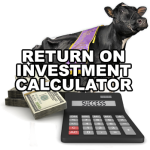

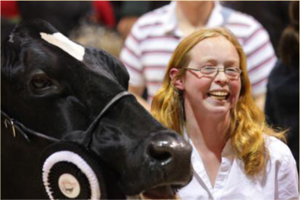 For those in Atlantic Canada, and more and more in the rest of Canada and the USA there is a fiery redhead that many have grown to know and love. Andrea Crowe’s passion for dairy cattle is second to none. She has worked at making Broad Cove and
For those in Atlantic Canada, and more and more in the rest of Canada and the USA there is a fiery redhead that many have grown to know and love. Andrea Crowe’s passion for dairy cattle is second to none. She has worked at making Broad Cove and 